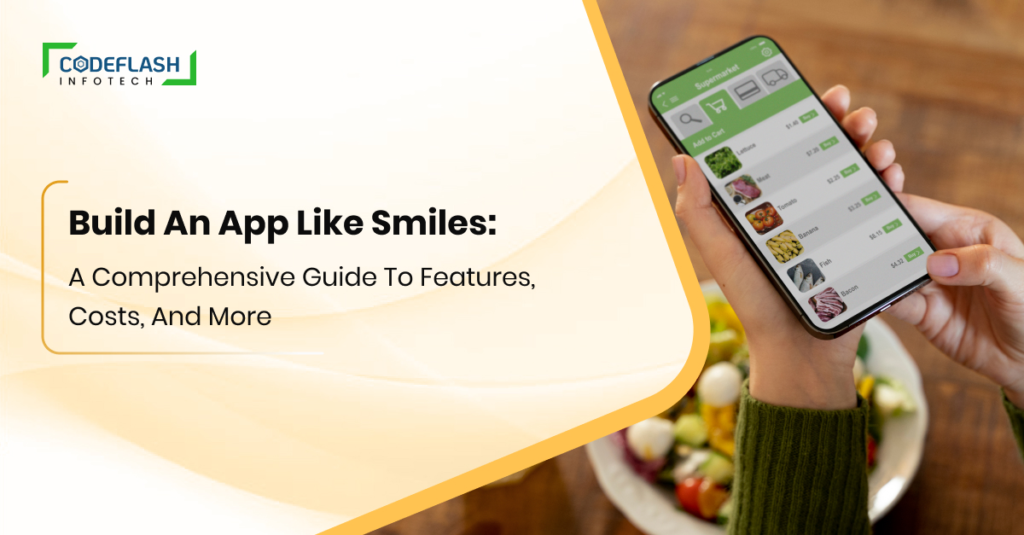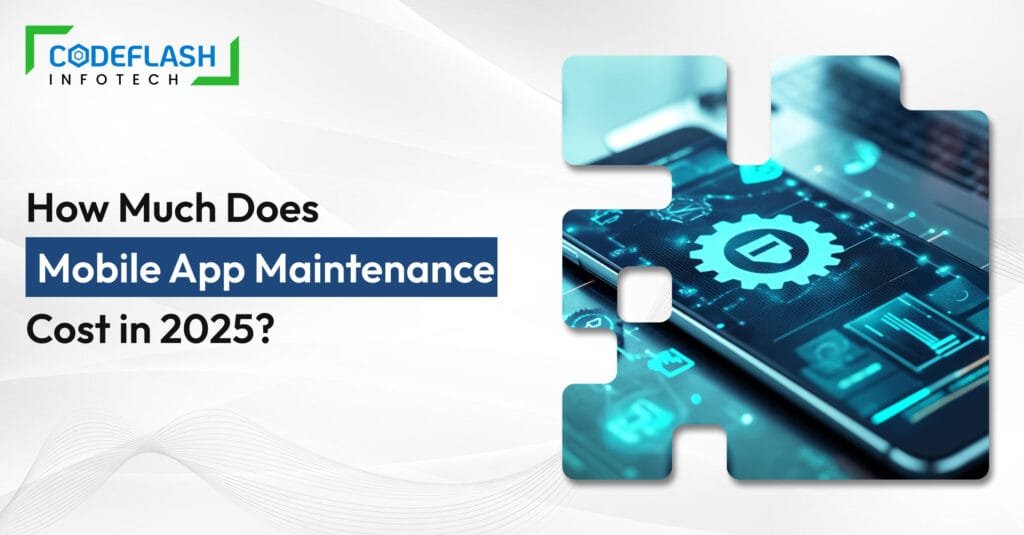
Build an App Like Smiles In UAE: A Comprehensive Guide
11 OCTOBER
Would you like to build an app like Smiles for food delivery?
If so, you’re in the right spot! The introduction of cutting-edge food delivery applications has completely transformed how we enjoy meals in the dynamic food industry. A notable participant in this ever-evolving market is Smiles, an innovative food delivery app that has captured users’ hearts and taste buds across the United Arab Emirates.
With a growing demand for quick and convenient food delivery services, many aspiring entrepreneurs are eager to build an app like Smiles and enter this thriving industry. By 2027, the online meal delivery business will be valued at $1.65 trillion, highlighting the increasing need for food delivery applications. Numerous companies are keen to capitalise on this trend by investing in solutions that mirror the success of apps like Smiles.
This blog post will guide you through the essential steps and considerations needed to build an app like Smiles. Discover how you can create a food delivery business that competes with the best in the market!
What is a Smile App?
A well-known meal delivery service in the UAE is called Smile UAE. The app provides gastronomic treats and links users with nearby eateries, making eating easy.
Happiness UAE has gained recognition for its menu selections, delivery services, and user-friendly features, including an easy-to-use interface. Customers choose this platform over others when they have gourmet desires because it’s simple to explore, purchase, and monitor delivery.
How Does the Smile App Function?
Smiles, a food delivery app, is free to download from the App Store or Google Play Store. Users may also create an account using the search engine.
After that, customers may pursue several shops to locate the appropriate goods arranged according to categories, such as bread, dairy, or essential home items. They may use the app to compare pricing and choose their desired delivery window.
Order progress updates are sent as soon as the cart is prepared, and the customer may follow the orders in real-time. The software also provides customised suggestions based on the user’s previous purchases. Consumers have many payment options: cash, digital wallets like Apple Pay and Google Pay, debit cards, and credit cards.
Additionally, users may save money while making purchases thanks to the app’s unique rates and discounts on various items.
Guide to Building an App Like Smiles UAE
Because there is a global need for these kinds of programs that make everything accessible, Smiles UAE has become increasingly well-known in the Middle East. As such, it’s a fantastic chance to develop an app similar to Smiles UAE. The whole process for creating a working application is as follows:
Step 1: Clarify the Goals of Your App and Who Your Target Users Are.
Before you begin development, determine your intended user base and clearly explain the app’s purpose. Analyse the advertisements to find out what your potential clients want and need.
For instance, Smiles UAE serves customers in the United Arab Emirates and offers an online platform for ordering necessities. Choose the unique value proposition that your app will provide and how it will set itself apart from rivals.
To simplify the process, consider partnering with an Android app development company specializing in cutting-edge solutions. With years of experience building apps like Smiles UAE, these experts can help you build an app like Smiles that meets your business goals.
Step 2: Conduct Market Research
Have a thorough demo asking about app requests and compiling experiences in the competitive arena. Examine other applications in your niche, such as Smiles UAE, to identify their strengths, weaknesses, and opportunities for development.
Consider their input to determine what features clients find appealing and where changes are required. You may use this information to create a productive app like Smiles UAE.
Step 3: Make a thorough plan and wireframes.
Create a comprehensive layout for your application, including its features, functions, and user interface. Begin by designing wireframes to visualise the application’s structure and flow, outlining the usability of each screen. This visual representation will help you understand user interactions and overall experience.
Consider client involvement (UX) plan criteria to ensure seamless use and an automated path throughout the application. Collaborating with skilled professionals can significantly enhance your design process. Hire UI/UX Designers to craft an intuitive interface that resonates with your target audience.
Utilize collaboration tools like Figma or Portray to create and refine your wireframes efficiently. These tools allow for easy adjustments and iterations as your project evolves.
Step 4: Choose the Right Technology Stack
Choosing an appropriate innovation stack is critical to your app’s progress. In addition to your desired features, consider factors like compatibility, security, and adaptability.
Depending on your time and financial constraints, you can use local and cross-platform advancement systems for a platform like Smiles UAE. Often selected options include Ripple, Respond Local, or local optimisation for iOS and Android.
Step 5: Create an MVP or minimum viable product.
Concentrate on creating a Minimum Viable Product (MVP) with essential functionality so that you can test your app concept and get user input. Prioritise features necessary to your software’s functionality, such as client enrollment, item browsing, requesting, and managing instalments.
To improve user engagement, keep the strategy simple and repeat it depending on customer feedback. You may also work with committed developers who are experienced in developing useful apps to create an app similar to Smiles UAE.
Step 6: Implement Robust Backend Infrastructure
Assist in developing a robust back-end architecture to enhance the use of your app and provide flexibility and consistent quality. To manage client verification, information capacity, and communication between the application and external administrators, as well as set up servers, databases, and APIs.
Cloud-based solutions like AWS or Google Cloud Platform must be considered for flexibility.
Step 7: Include security features and include the payment gateway.
You designed doors for safe installation to promote regular interactions inside your application. To secure client instalment data, collaborate with reputable providers to provide a range of payment choices and maintain PCI compliance.
Step 8: Test and Iterate
Ensure you thoroughly test your app on various devices and operating systems and set up conditions to identify and resolve any problems or performance concerns. Test the app’s usability with actual users to get feedback on its route, overall user engagement, and usefulness.
Emphasise the feedback you receive, keep moving forward, and improve your app to suit users’ preferences and demands.
Step 9: Launch and Market Your App
Release your software onto app stores whenever you’re satisfied with its functionality and quality. Prepare eye-catching app store posts with crystal-clear images, videos, and audits to entice prospective customers. Implement app store optimisation (ASO) strategies to make your app more visible and permeable in search results.
Develop a thorough showcasing strategy to promote your app via email, influencers, social media, and other platforms. It will help you create an app similar to Smiles UAE by contacting an on-demand app development business.

How Are Grocery Delivery Apps Like Smile Worth Investing in?
There are several benefits to using a grocery delivery app like Smile in Dubai, United Arab Emirates, including:
- Convenience
Customers may order food from over 500 restaurants and cafes using cell phones. This eliminates the need for in-person store visits and saves time and effort. - Extensive Range of Products
The app offers dairy products, meat, drinks, snacks, fresh produce, and home goods. Customers can evaluate costs and choose from various stores for fantastic offers. - Customised Suggestions
The grocery delivery application provides personalised recommendations based on prior purchase behaviour, making it easier for customers to identify things of interest. - Special Deals & Discounts
The software allows users to save money on purchases by offering bargains and discounts on various items. - Real-time Order tracking
Customers may get status updates and monitor the progress of their purchases. - Various Payment Options
The software offers many payment methods, such as digital wallets, debit cards, and credit cards. - Environmental advantages
Online shopping may help preserve a cleaner environment by reducing the need for packaging and delivery, which can lower carbon emissions.
Conclusion
Are you a Dubai-based startup?
Are you one of those intelligent, tech-savvy digital startups who think technological innovations are the only way for their businesses to succeed? Do you want to take advantage of the boom with your innovative mobile app? Speak with Codeflash Infotech right now!
Choosing a food app developer in Dubai, United Arab Emirates, proficient in developing software that meets the needs and preferences of the intended user base is unquestionably crucial when developing a product such as Smiles.
The developer team should have experience implementing comparable applications and be conversant with the selected technology stack. Work with the top app development company in the UAE to create your app more quickly.
Frequently Asked Questions
An online grocery delivery app’s basic MVP may be developed for between AED 20,000 and 25,000 over four to seven months.
Yes, supermarket delivery apps are a profitable business. The business might boost profitability by using technology wisely and streamlining procedures.
The grocery delivery app may make money by charging food sellers monthly for deliveries during peak hours, showing third-party ads, or charging users a monthly or annual membership fee.





